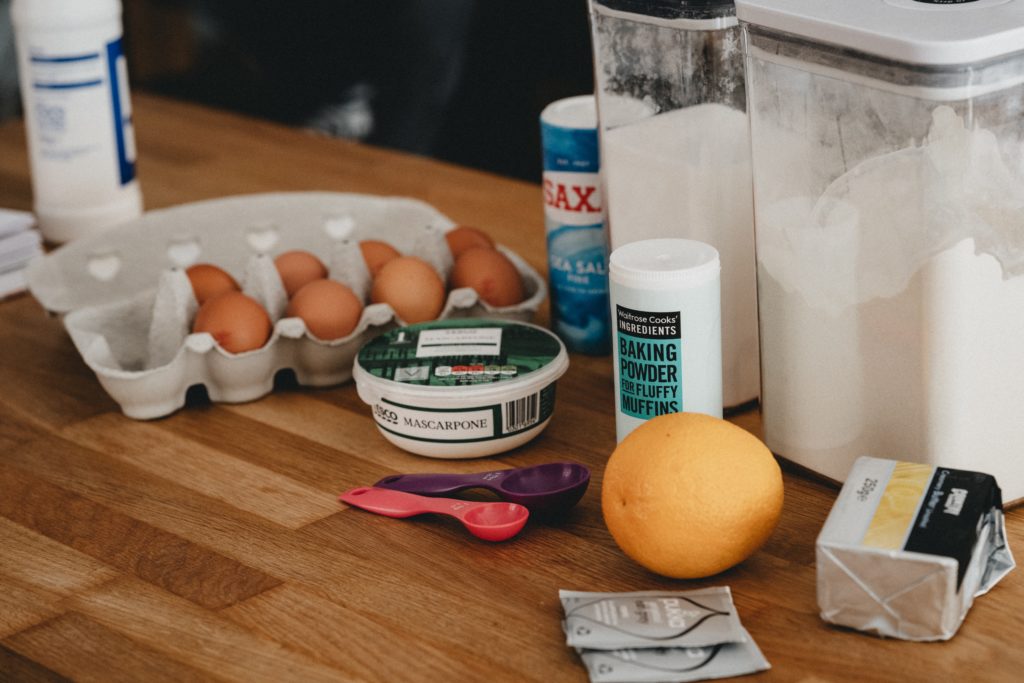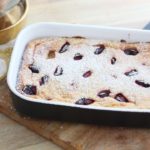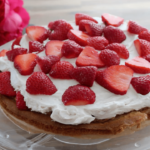In this day and age, we are more conscious of ingredients and nutrition. Allergies or special diets such as lactose-free, gluten-free, vegan baking and more are attracting more and more interest.
One of the most important questions here is often how certain ingredients can be replaced. What can I use as an egg substitute? What can sugar or baking soda be replaced with? Can I also bake a vegan variant? These questions and more are explained below in our food alternatives guide.

Baking without gelatin: how to replace gelatin?
Since gelatin is made from animal tissue, vegans understandably like to avoid this baking ingredient. Agar-agar, a vegetable alternative made from dried seaweed, is a suitable substitute for gelatin. Agar-agar is sold as a powder and must first be briefly boiled with water or similar before use. Other alternatives are cornstarch, corn or rice flour or pectin. Pectins are plant polysaccharides and can also be used wonderfully as gelling agents.
Bake lactose-free (without dairy products): How to replace milk, yogurt, cream?
For vegans or people with lactose intolerance, milk can usually be wonderfully replaced by soy milk, rice milk, almond milk or oat milk. Coconut milk instead of milk is suitable, for example, for creamier fillings or exotic pastries. Soy yogurt, soy curd and soy cream are a good alternative for baking, especially for vegans.
How to replace baking soda and baking powder?
Replacing baking soda and baking powder is usually a bit more difficult. As an alternative, for example, mineral water with a lot of carbonic acid, or even high-proof alcohol can be taken. Other alternatives are potash (potassium carbonate) which is traditionally used in Christmas baking.
Baking without flour: how to replace flour and starch?
Coconut flour, almond flour and nut flour are used especially in low carb baking. You can replace normal flour but unfortunately not 1:1 by the lower-carbohydrate flours and must really proceed recipe by recipe. Tips and recipes for these substitute flours can be found in my healthy baking category. Light spelt flour is particularly suitable as a substitute for wheat flour. It not only tastes and looks almost like wheat, but also has very similar baking properties. You can use it for all types of dough. However, like wheat flour, it contains gluten, so it is not for people with gluten intolerance. Instead of cornstarch, sometimes other binders like guar gum can be used in baking. As a substitute for pudding powder, starch is suitable, since the normal pudding powder packets consist almost only of starch anyway. If you want to swap the ingredients, you just need to know that there are about 40 grams in a packet of pudding powder.
Baking without sugar: how to replace sugar, powdered sugar, honey?
Instead of sugar, you can use alternative sweeteners such as honey, maple syrup, agave syrup and other fruit sweeteners. In the case of honey and maple syrup, for example, 80 grams are sufficient to obtain the same sweetening power as 100 grams of sugar. Depending on the recipe, the amount of liquid may also need to be adjusted.
If you no longer have powdered sugar at home, you can simply grind regular sugar very finely. I often do this and run the sugar through several rounds in the food processor or kitchen chopper until it is nice and fine.
Baking without butter: how to replace butter?
When it comes to replacing butter in cakes and the like, I don’t think there are any blanket tips such as “just use cottage cheese instead of butter,” even if such advice is circulating on the web. It really depends on the type of dough and the specific recipe. You can find a detailed test on baking without butter here. In general, there are the following options, among others:
Half-fat butter instead of butter actually often works, for example in many cakes especially from sponge dough and some cookie recipes. Simply replace the butter with the same amount of half-fat butter. Margarine (including vegan margarine) and oil can also replace butter depending on the type of dough. I’ve even made shortbread with vegan margarine, which tasted good, though not quite as delicious as with regular butter. If you want to substitute butter for oil in the cake, a smaller amount will do. A rule of thumb is that in sponge cakes, about 100 grams of butter equals 80 grams of oil.
Quark as a butter substitute is particularly suitable if you only replace part of the fat. You can do the same with applesauce. Yogurt and semolina as well as buttermilk or cream can also replace butter in baking, but the result will have a different consistency.
Baking without egg: how to replace eggs?
Ground flax seeds instead of eggs as well as chia seeds are particularly suitable for savory pastries because of their slightly nutty taste. The flax seeds also need to be mixed with water; for every two tablespoons of ground seeds, add about 2-3 tablespoons of water.
Egg substitute powder works on a similar principle, but tastes more neutral than soy flour. Be sure to follow the package directions; usually one teaspoon of egg substitute powder must be mixed with a few tablespoons of water for each egg.
Soy flour instead of egg is a bit more advanced ;-). Stirred into two tablespoons of water, one tablespoon of soy flour can replace one egg.
Applesauce can also replace eggs in baking. For this, use 70 grams of applesauce per egg. I recommend unsweetened applesauce as an egg substitute, otherwise, be sure to adjust the amount of sugar in addition to the amount of liquid.
Eggs are one of the main ingredients in many baking recipes because they make cakes and the like fluffy and bind the ingredients together. If you want to bake vegan or do not tolerate eggs, you can also use fruit and other plant-based alternatives as egg substitutes. Example: Instead of an egg, finely mash or puree half a ripe banana and add it to the cake batter. Personally, I love this variation because the pastry becomes extra moist; however, this egg substitute reaches its limits in recipes with a lot of eggs in the batter.






